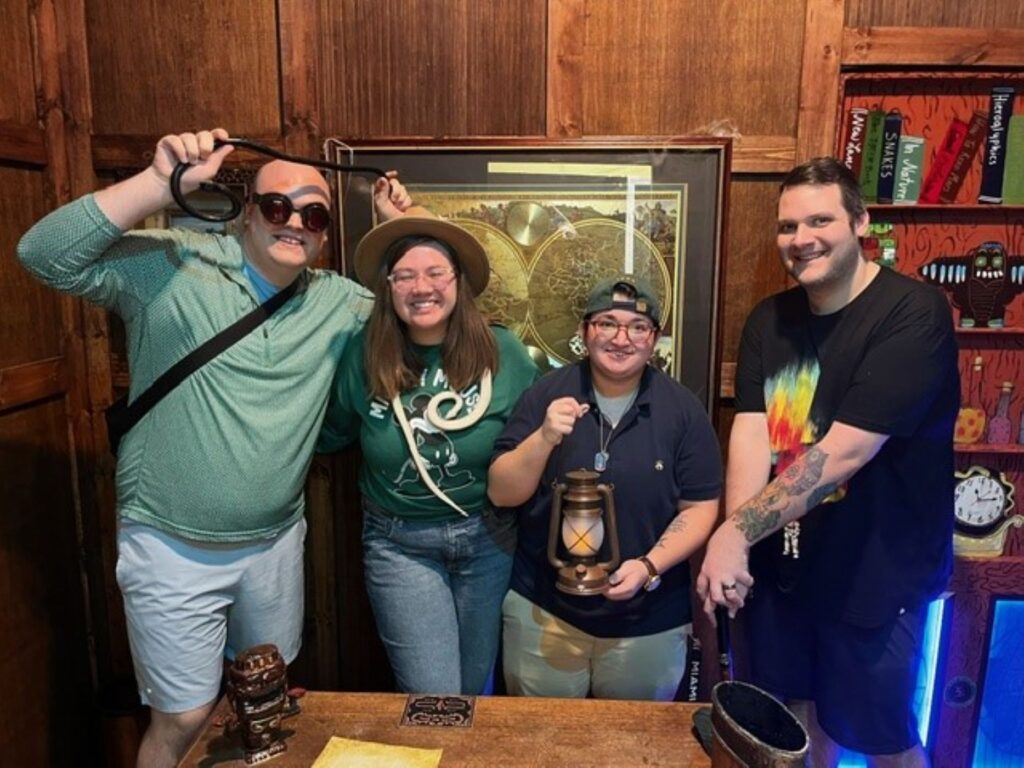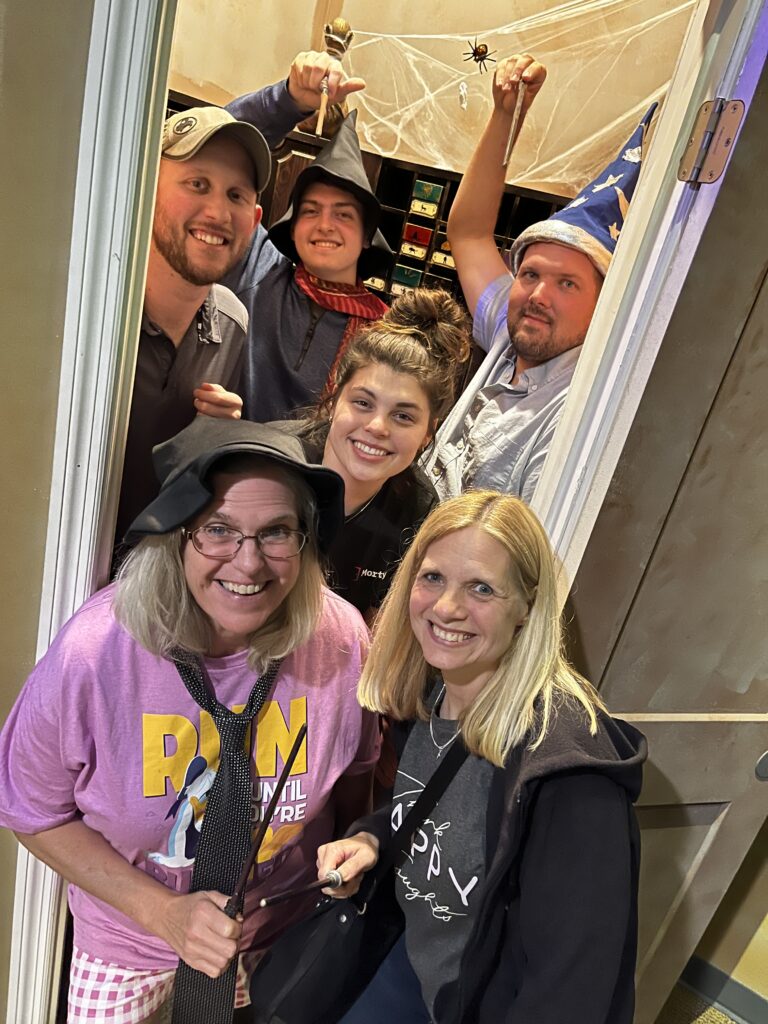Escape rooms have rapidly evolved from a niche hobby into a mainstream entertainment phenomenon. Designing an escape room now involves a blend of creativity, technology, and psychology to create immersive and memorable experiences. We went through this process at EDGE ESCAPE when developing our rooms and wanted to share some insights. This blog post will explore the process of designing an escape room and how the industry has grown and changed over the years.
The Art of Designing an Escape Room
1. Concept and Theme Development
– Idea Generation: Start with brainstorming themes that captivate players’ imaginations. Popular themes include mystery, horror, adventure, and science fiction. At Edge Escape our themes were developed as a family activity with my children. We had played a number of escape rooms as a family, and I sat down with my kids to brainstorm what themes they enjoyed or would like to play.
– Storyline Creation: Develop a compelling narrative that ties the puzzles and rooms together. A strong story enhances immersion and gives players a sense of purpose. At Edge Escape we started with a story and through people playing the game and ideas from gamemasters have continuously adapted that story to ones that the guests enjoyed.
2. Puzzle Design
– Variety and Balance: Ensure a mix of puzzle types (logic, physical, word, etc.) to cater to different player strengths. Balance difficulty to keep the game challenging yet enjoyable. One of the core design thoughts we had at Edge Escape was that every room needed to have a physical puzzle as well as a variety of rother puzzles so every member of the group could find something that they enjoyed.
– Integration with Theme: Design puzzles that fit seamlessly within the storyline and environment. Avoid puzzles that feel out of place or forced.
3. Room Layout and Props
– Space Utilization: Plan the room layout to guide players through the story. Use space creatively to hide clues and create surprises. Edge Escape set a minimum of three rooms for every escape adventure and the goal was to have each room be an environment change.
– Authentic Props: Invest in high-quality props and decorations to enhance realism. Props should be durable and safe for repeated use.

4. Technology and Innovation
– Interactive Elements: Incorporate technology like RFID, sensors, and automation to create interactive and dynamic experiences. Edge Escape is considered a 3rd generation escape room because of the technology involved. All our rooms utilize a program that senses when certain things are done to trigger automatic events.
– Augmented Reality (AR): Some escape rooms use AR to blend digital elements with the physical environment, adding a futuristic touch.
5. Testing and Refinement
– Beta Testing: Conduct multiple test runs with diverse groups to identify and fix issues. Feedback helps refine puzzles, pacing, and the overall experience.
– Iterative Improvements: Continuously update and improve the room based on player feedback and industry trends. Being a family-owned escape room Edge Escape is able to make changes right away based on customer feedback and experience. We are always striving to improve the experience for our guests.
The Evolution of Escape Rooms
1. From Simple Beginnings to Complex Designs
– Early Days: Early escape rooms were simple in design, often set in small spaces with basic puzzles and minimal decoration. When developing Edge Escape, we wanted to bring a high-quality experience to our customers as we had seen many people turned off when playing in an early day escape room with just physical locks in a single room.
– Modern Rooms: Today’s escape rooms feature intricate themes, elaborate sets, and advanced technology. The industry has shifted towards creating cinematic experiences. This is what we strive for at Edge Escape, to create a feeling that the guests are in Wonderland like Alice or on an adventure just like Indiana Jones.
2. Rise of Professionalism
– Dedicated Designers: Initially, many escape rooms were designed by hobbyists. Now, professional designers and even film set designers are involved, raising the quality and creativity.
– Industry Standards: As the industry matures, standards for safety, customer service, and experience quality have been established.
3. Technological Advancements
– Smart Puzzles: Modern escape rooms use technology to create puzzles that react in real-time to player actions, enhancing interactivity.
– Virtual and Augmented Reality: VR and AR escape rooms offer new dimensions of gameplay, allowing for immersive experiences beyond the physical room.
4. Diversification and Specialization
– Themed Rooms: Escape rooms now cater to niche markets with specialized themes, from historical settings to popular movie franchises.
– Mobile and Pop-Up Escape Rooms: Some businesses offer portable escape room experiences for events and parties, expanding their reach.
5. Integration with Other Entertainment Forms
– Cross-Platform Experiences: Escape rooms are increasingly integrated with other forms of entertainment, such as video games, board games, and interactive theater.
– Corporate and Educational Use: Businesses use escape rooms for team-building exercises, while educators use them as interactive learning tools.

In Summary:
Designing an escape room is a complex and rewarding process that combines creativity, technology, and storytelling. We took our time at Edge Escape to build rooms that would appeal to families and friends traveling in Orlando Area or locals living in Winter Garden, Celebration, Kissimmee, Hamlin, 4 Corners area. As the industry continues to grow, escape rooms are becoming more sophisticated, offering richer and more diverse experiences. Whether you’re a designer or a player, the evolution of escape rooms promises exciting innovations and endless adventures. Edge Escape hopes you visit us during your travels in the Orlando area and get to have an amazing fun filled experience with us.



